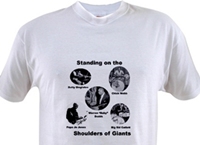The first is Dizzy Gillespie's Salt Peanuts from the Town Hall, New York City, June 22, 1945. The person who took the time to annotate this clip and post it (along with the other two below)clearly understands music and has excellent critical listening skills. I do need to make one correction to the annotations, which is historical: the drummer identified as Sid Catlett is actually Max Roach. During that concert Sid played on a single song - Hot House - then quickly departed to a gig with Woody Herman. A minor detail. Everything else is spot on. Here is the clip:
The next listening guide is the groundbreaking West End Blues, a Joe Oliver song that Louis Armstrong recorded during his 1928 Hot Fives Session. This was a turning point in jazz on a number of levels. Many of the reasons are evident as you listen to this clip and read the annotations. This song and others from the sessions are available on this album: Louis Armstrong - His 26 Finest Hot Fives & Hot Sevens 1925-1928.
The final song in the listening guide series is Bessie Smith's Backwater Blues. Bessie wrote this song and recorded it on February 17, 1927. This song is on The Essential Bessie Smith. As a side note, James P. Johnson, the pianist, was one of the top three pianists in his era (along with Willie "The Lion" Smith and Thomas "Fats" Waller.) Johnson composed the Jazz Age anthem - The Charleston and was one of the founders of the stride style (along with Smith and Waller.) Here is the Bessie Smith clip:
In my next few posts I am going to discuss the importance of 1959, the year that changed jazz, and the four landmark albums that were released that year.



No comments:
Post a Comment